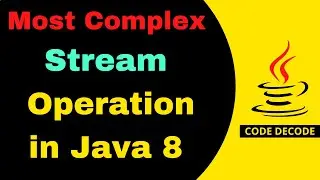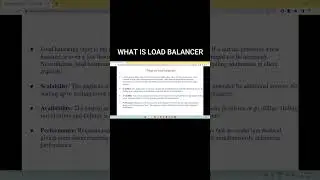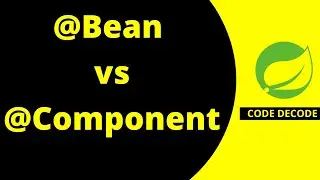Java Spring boot Interview Questions and Answers for 7+ years of Experienced candidate | Code Decode
In this video of code decode we have covered interview questions for 7+ years experienced candidate.
Udemy course link (Discounted )
https://www.udemy.com/course/master-s...
*Q) What is an embedded container in Spring Boot, and why is it important?*
Spring Boot includes an embedded container, which is a lightweight server that can run inside a Spring Boot application. It eliminates the need for developers to deploy their applications on external containers like Tomcat or Jetty, making it easier to develop and deploy applications.
*Q) What is hot reloading and how does it work?*
Hot reloading allows developers to make changes to their code, resources, or configuration files while an application is running, and see those changes immediately reflected without needing to *restart the application.*
*Q) How do u implement dev tools in the spring boot app?*
Implementing Spring Boot DevTools in a Spring Boot application is straightforward. You primarily need to add the DevTools dependency to your project's build configuration file (`**pom.xml**` for Maven or `**build.gradle**` for Gradle) and configure any additional settings as needed.
*Q) Cases where embedded tomcat is not that helpful?*
Embedded Tomcat, which is the default embedded servlet container used by Spring Boot applications, may not be the most suitable choice in certain situations. Here are some scenarios where using embedded Tomcat might not be helpful or appropriate:
1. High-Traffic Applications
2. Complex Deployment Environments
3. Heavyweight Applications
4. Specialized Protocols or Features
5. Integration with Legacy Systems
6. Customization Requirements
*Q) Cases where embedded tomcat is not that helpful?*
Embedded Tomcat, which is the default embedded servlet container used by Spring Boot applications, may not be the most suitable choice in certain situations. Here are some scenarios where using embedded Tomcat might not be helpful or appropriate:
1. High-Traffic Applications
2. Complex Deployment Environments
3. Heavyweight Applications
4. Specialized Protocols or Features
1. Integration with Legacy Systems
2. Customization Requirements
*Q) How can you externalize the configuration properties in Spring Boot?*
In Spring Boot, we can externalize the configuration properties by using the application.properties or application.yml file. These files are located in the src/main/resources directory of the Spring Boot application. By using these files, we can configure various properties such as database settings, server settings, and other application-specific properties. We can also use the @Value annotation to inject configuration properties into a Spring bean.
Q)** Explain the concept of externalized configuration in Spring Boot and its benefits.**
Externalized configuration in Spring Boot refers to the practice of storing configuration properties outside of the application code and packaging them separately, allowing for easy customization and modification without requiring code changes or recompilation. These configuration properties can include settings such as database connection details, server ports, logging levels, feature toggles, and more
Most Asked Core Java Interview Questions and Answers: • Core Java frequently asked Interview ...
Advance Java Interview Questions and Answers: • Advance Java Interview Questions
Java 8 Interview Questions and Answers:
• Java 8 Interview Questions(New Features)
Hibernate Interview Questions and Answers:
• Hibernate Interview Questions Java
Spring Boot Interview Questions and Answers:
• Advance Java Interview Questions
Angular Playlist:
• Angular Course Introduction || Angular 8
SQL Playlist: • SQL Interview Questions and Answers
GIT: • GIT
Subscriber and Follow Code Decode
Subscriber Code Decode: https://www.youtube.com/c/CodeDecode?...
LinkedIn : / codedecodeyoutube
Instagram: / codedecode25
#springboot #codedecode #interviewquestions






























![Kafka Interview questions and answers for 2024 for Experienced | Code Decode [ MOST ASKED ] | Part-1](https://images.videosashka.com/watch/Q7tU0B1bnSE)
